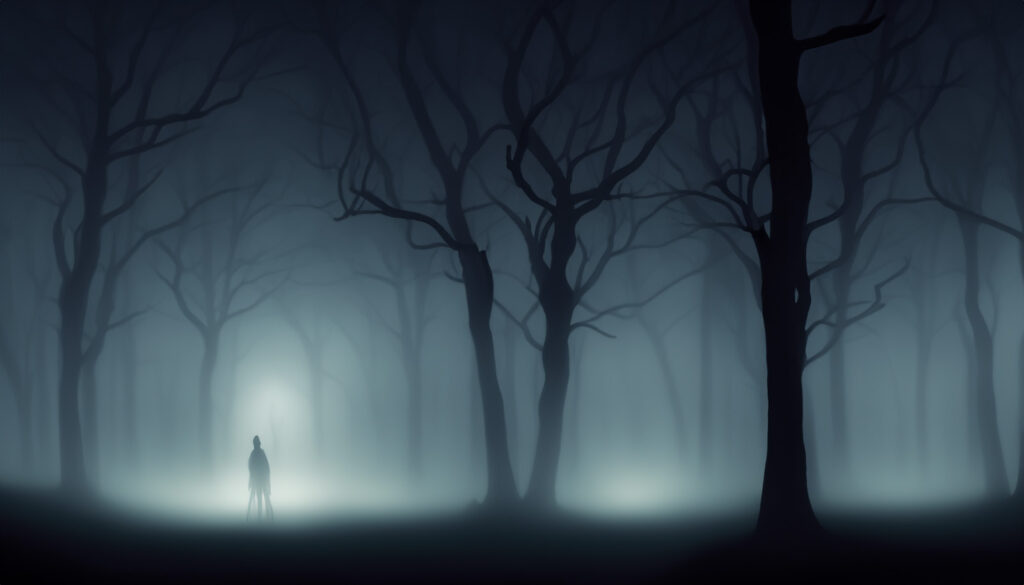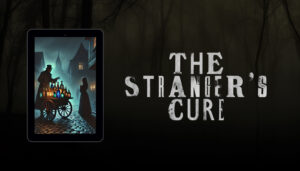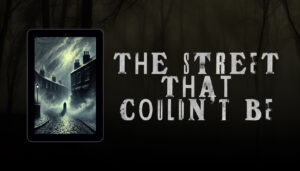Hello again, dear reader. I hope you’ve had a week filled with words and books that set your imagination alight.
After last week’s article where we explored villains in dark fantasy and horror, this week we’re going to be focusing on the evolution of the creatures we love to read about.
Imagine unearthing the secrets of elusive spirits like the Scottish kelpies, East Asia yokai, and the lesser-known European tatzelwurms. Or if you’re more traditional, it’s chimeras, Eldritch Terrors and, of course, vampires.
Enjoy!
The Influence of Folklore on Creature Design
You know how our favorite scary stories take their inspiration from ancient myths and legends, right? Let’s look at a few examples which we should all be familiar with.
First, there’s the Wendigo from Native American stories. It’s this evil spirit that takes over people who resort to eating others when they’re desperate. It’s like a warning about how dangerous our darkest urges can be.
Then there’s the Nuckelavee from Orcadian tales. It’s this freaky creature that’s part-man, part-horse, and it comes out of the sea to attack coastal towns with its poisonous breath. It’s like a reminder of how scary nature can be, especially what’s hiding in the ocean.
And don’t forget about Baba Yaga from Slavic folklore. She’s this creepy witch who lives in a hut with chicken legs deep in the forest. Complete with iron teeth, she loves playing tricks on people. She’s a cautionary tale about wandering too far into the unknown.
If you’re more into well-known monsters, here are a few examples:
- Werewolves: Originating from European folklore, werewolves embody the primal fears of the untamed wilderness and the beast within. In Stephen King’s novel “Cycle of the Werewolf,” a werewolf terrorises the small town of Tarker’s Mills, unleashing chaos and fear among its inhabitants.
- Banshees: Found in Irish mythology, the Banshee is a vengeful spirit whose chilling wails foretell death, embodying fears of mortality and the unknown. In Patricia Briggs’ “Mercy Thompson” series, Mercy encounters a banshee who serves as a harbinger of death.
- Vampires: With roots in various cultures worldwide, vampires tap into fears of mortality, desire, and the corrupting influence of power. In Anne Rice’s “The Vampire Chronicles,” you’ll see the charismatic vampire Lestat de Lioncourt.
The Evolution of Creature Archetypes
We all have those stories we love to read repeatedly. But it’s not just the main characters that keep us hooked. It’s also the creatures the author throws in.
From the terrifying monsters of European stories to the awe-inspiring dragons from East Asia legends, these mythical creatures have always stood for wild nature and bravery. Like in J.R.R. Tolkien’s “The Hobbit” and “The Lord of the Rings,” where dragons like Smaug and Glaurung give the heroes a run for their money.
But what about the undead, those creepy creatures who should be dead but keep on walking? In Bram Stoker’s “Dracula,” the main vampire is like the king of scary, sucking people’s blood and trapping them in darkness.
And then there are zombies, those never-ending hordes who just want to eat human flesh. They’re like the ultimate fear of disease and the end of the world. Like in Max Brooks’ “World War Z,” where the zombie apocalypse takes over the entire planet and makes us realize how fragile life can be.
Here’re some more examples:
- Phoenixes: Originating from Greek mythology, when the phoenix dies, it bursts into flames and is reborn from its own ashes. In J.K. Rowling’s “Harry Potter” series, Fawkes is the most memorable companion.
- Chimeras: Found in Greek mythology, chimeras typically have the body of a lion, the head of a goat, and the tail of a serpent. Chimeras embody chaos and the unnatural. In Madeline Miller’s novel “Circe,” the protagonist encounters a chimera during her exile on the island of Aiaia.
- Kitsune: Hailing from Japanese folklore, kitsune are intelligent fox spirits known for their shape-shifting abilities and cunning nature. In Lian Hearn’s “Tales of the Otori” series, the kitsune appears as mystical beings capable of manipulating events from the shadows, showcasing their enigmatic and elusive nature.
From Page to Screen: Creature Adaptations in Film and TV
Filmmakers and showrunners must carefully balance remaining faithful to the source material while also adapting it to suit the visual medium.
Making a movie or TV show based on books is tricky. You must stay true to the story while also making it look good on screen.
One show that nailed it (in my opinion) is “The Witcher.” It brought to life the Leshy, a forest spirit from Slavic folklore that can change into different things like animals and trees. It’s this eerie, powerful guardian of the forest, keeping it safe from harm.
Another example is the Gorgon from the film and subsequent TV series “Percy Jackson & the Olympians: The Lightning Thief.” This monster from Greek mythology has snake hair and can turn people to stone just by looking at them. It adds a nice, if not slightly childish, twist to the heroes’ quest for the Golden Fleece.
And don’t forget the Wendigo from the TV series “Hannibal”. Inspired by Algonquian folklore, the Wendigo is depicted as a cannibalistic creature with an insatiable hunger for human flesh.
Here’re some more examples:
- Dementors: Featured in the “Harry Potter” series, dementors are sinister creatures that feed on human happiness, leaving their victims in a state of despair and hopelessness. They serve as guardians of the wizarding prison Azkaban, instilling fear in all who encounter them.
- Sarlacc: From the “Star Wars” universe, the sarlacc is a monstrous creature living in the Great Pit of Carkoon on the desert planet Tatooine. It captures its prey with its tentacles and slowly digests them over a thousand years, making it a terrifying threat to anyone unfortunate enough to fall into its grasp.
- Kaiju: Featured in the “Pacific Rim” film series, the kaiju are massive monsters that emerge from a dimensional rift deep beneath the Pacific Ocean. These towering creatures wreak havoc on coastal cities, forcing humanity to deploy giant robots known as Jaegers to combat them in epic battles for the fate of the world.
In summary
As we wrap up our dive into the world of creepy creatures in dark fantasy stories, let’s think about what makes them stick in our minds. What do you reckon? What’s the secret ingredient that makes them so scary? Drop your thoughts in the comments below.
For me, it’s all about how varied and interesting these monsters are. They come from all over, from ancient tales to modern twists, showing us different sides of fear and fantasy.
Just remember, these bad guys aren’t just here to scare us. They also make us think about ourselves and what we’re afraid of.
So, as you keep exploring your favourite reads, don’t forget to face your fears and come out stronger on the other side.
Catch you later, and happy reading.



